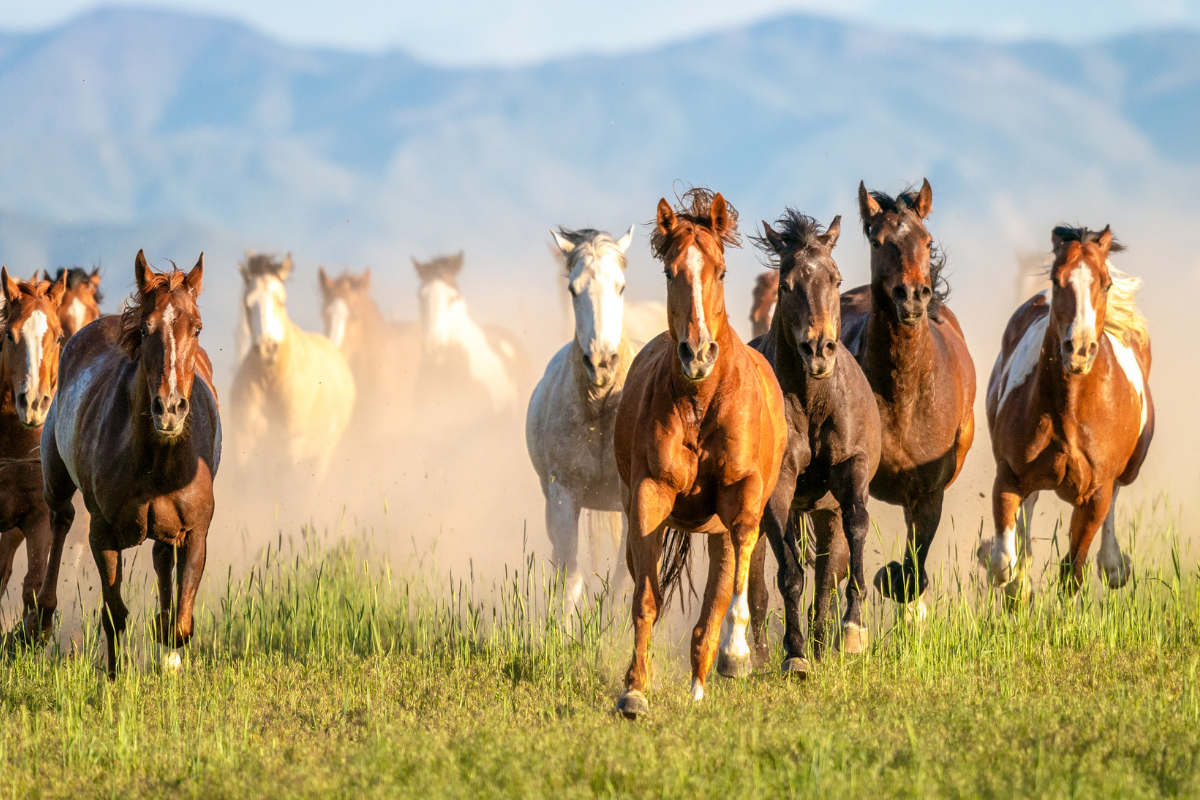Wild horses and burros across the American West routinely are injured and die after being torn from their homes on public lands and sent to off-range corrals (ORCs) as part of the Bureau of Land Management’s longstanding eradication policies. Despite the federal protections provided to these “living symbols of the historic and pioneer spirit of the American West,” the BLM does nothing to ensure that wild horses are treated decently in these facilities, and a new off-range corral near Winnemucca, Nevada, that could hold up to 4,000 wild horses and burros poses a serious health risk to wild horses and burros.
The Winnemucca ORC presents unique hazards due to the presence of silty clay soil at the site that is prone to dust and flooding and extreme heat that could cause unnecessary suffering for wild horses and burros, many of whom will not have access to shade or shelter. After the BLM issued a contract to JS Livestock to fund this facility, in August 2022, Friends of Animals filed a lawsuit challenging the decision. While Friends of Animals has not yet received a ruling on its case, the BLM continues to remove a record number of wild horses from our public lands. Its removal decisions appear to be largely based on the capacity of off-range holding facilities, such as the Winnemucca ORC, rather than conditions on the range.
“Friends of Animals cannot sit idly by while BLM potentially transfers thousands of wild horses from their homes in the wild to the cramped and dangerous feedlot near Winnemucca,” said Jennifer Best, director of Friends of Animals Wildlife Law Program, based in Centennial, CO. “This destruction is outrageous.”
On June 14, 2023, Friends of Animals filed a motion for preliminary relief seeking to stop the transfer of additional wild horses or burros to the Winnemucca ORC until the judge can rule on the merits of our case.
Disease outbreaks are common at off-range corrals. The most recent example occurred in April and May 2022, when at least 145 wild horses died from equine influenza at the Cañon City ORC in Colorado. These types of outbreaks occur often given the conditions of the facilities, inadequate regulations and unenforceable guidelines.
The BLM estimates there were approximately 82,883 wild horses and burros on BLM public lands as of March 1, 2023. Since 2018, the agency has removed more than 64,000 wild horses and burros from their home ranges, more than triple the number taken in the previous five years.
Of the 245 million acres of public land managed by the BLM, 155 million are open to livestock grazing. By contrast, wild horses are restricted to just 26.9 million acres (which continues to decrease under BLM management), and which they must share with livestock. Upwards of 2 million cattle graze public lands, not to mention millions of sheep, and the government has authorized thousands of oil, gas and mineral extraction projects in these areas as well. These activities, not wild horses, are damaging the environment, fragmenting wildlife habitat and contributing to climate change.
FoA’s 2022 lawsuit also raised concerns about JS Livestock only being required to clean the pens up to four times per year. In six months, 100 horses will produce about 465 tons of waste and about 930 tons annually. Four thousand horses will produce about 18,615 tons every six months and about 37,230 tons of waste annually.
The thought of wild horses and burros being cramped into this feedlot is heartbreaking. We believe that the BLM failed to comply with the law in approving the contract for the Winnemucca ORC without considering the impacts to individual wild horses and burros or the environment and without enacting sufficient safeguards to prevent inhumane treatment of the animals there.
Thus, Friends of Animals is asking the court to stop the BLM from transferring any more wild horses and burros to this facility. These iconic animals deserve to stay in the wild where they belong.

